 Church of San Javier, Jesuit Missions of the Chiquitos
Church of San Javier, Jesuit Missions of the ChiquitosSource: https://commons.wikimedia.org/wiki/File:San_Javier_church_interior.JPG
Author: Bamse

Jesuit Missions of the Chiquitos are six settlements of Christianized Indians that were established between 1696 and 1760 in Bolivia. These mission settlements, called reducciones, were the ideal cities inspired by 16th century philosophers. Today the six, namely San Francisco Javier, Concepción, Santa Ana, San Miguel, San Rafael and San José is an outstanding example of the living heritage in the land of the Chiquitos. They were inscribed as World Heritage Sites during the 14th session of the World Heritage Committee which met in Banff, Alberta, Canada, on 7-12 December, 1990.
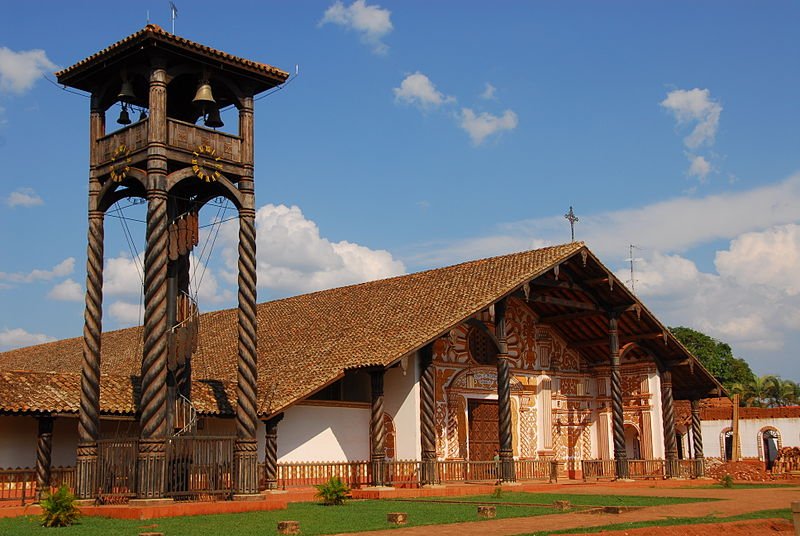 Church of Concepción, Santa Cruz, Bolivia
Church of Concepción, Santa Cruz, BoliviaSource: https://commons.wikimedia.org/wiki/File:Concepcion_church.JPG
Author: Bamse

History of the Jesuit Missions of the Chiquitos
Jesuit priests arrived in Bolivia (then the Vice-Royalty of Peru) in 1567 with the mission to convert the Indians to the Roman Catholic faith. They built the first collegial church in Potosi in 1577. This was extended with a house of worship being built in Santa Cruz de la Sierra in 1592.In 1671, the Jesuit priests were sent to preach the faith to the Moxos Indians. At the encouragement of Agustin Gutierrez de Arca, who was the Governor of Santa Cruz, the Jesuit priests visited the land of the Chiquitos. In 1696, San Francisco Javier was the first reduccion, or mission settlement, that was established. It was the first of eventually ten mission settlements.
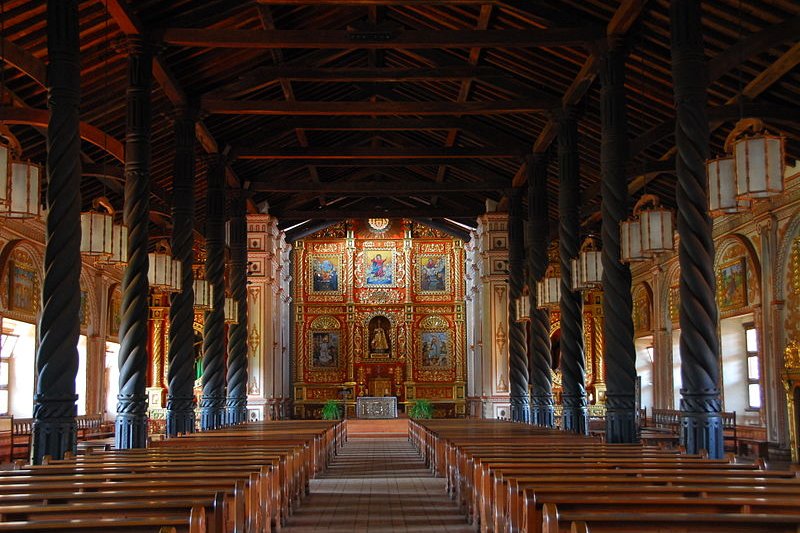 Interior of the Church of Concepcion, Santa Cruz
Interior of the Church of Concepcion, Santa CruzSource: https://commons.wikimedia.org/wiki/File:Concepcion_church_interior.JPG
Author: Bamse

The Jesuit priests modelled the reduccions after the description of ideal cities by humanist philosophers such as Thomas More in Utopia and Philip Sydney in Arcadia. There were clear stipulation as to the site to be selected and the layout of the settlements. Space is provided for the building of the church, monastery, workshops, schools, and at times, a "casa de la misericordia", or house for widows and abandoned women.
With the exception of the Jesuit priests, white men were forbidden from entering these mission settlements, where only the Chiquito language was permitted. By respecting the social structure of the Indians, the priests were able to embark on a unique form of Christianizing. They were also allowed to continue even after the expulsion of the Company of Jesus in 1767.
What to See in Jesuit Missions of the Chiquitos
San Francisco Javier is the westernmost of the mission settlements. It is also the first reduccion in the Chiquitos territory. Among the structures that survived here include the school and the church, the latter designed by Father Martin Schmidt, a priest who was also an architect, composer, instrumentalist and maker of stinged instruments.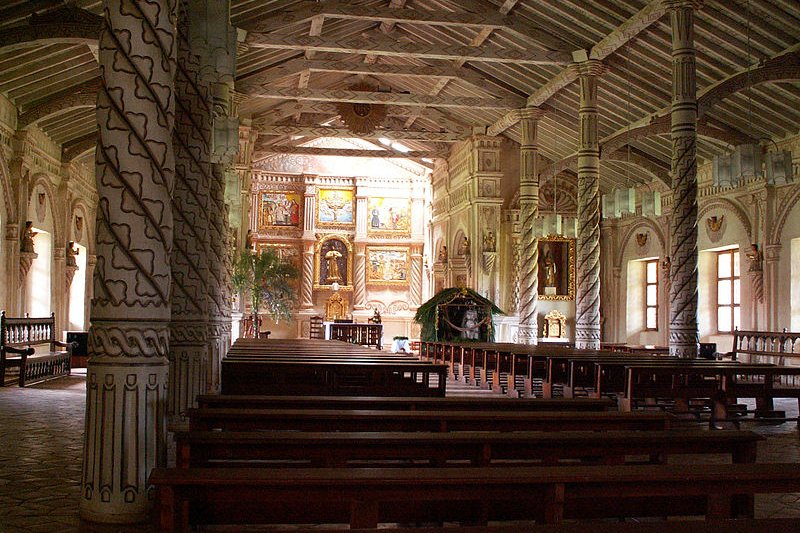 Church of San Javier, Jesuit Missions of the Chiquitos
Church of San Javier, Jesuit Missions of the ChiquitosSource: https://commons.wikimedia.org/wiki/File:Church_San_Javier_Interior.jpg
Author: Daan

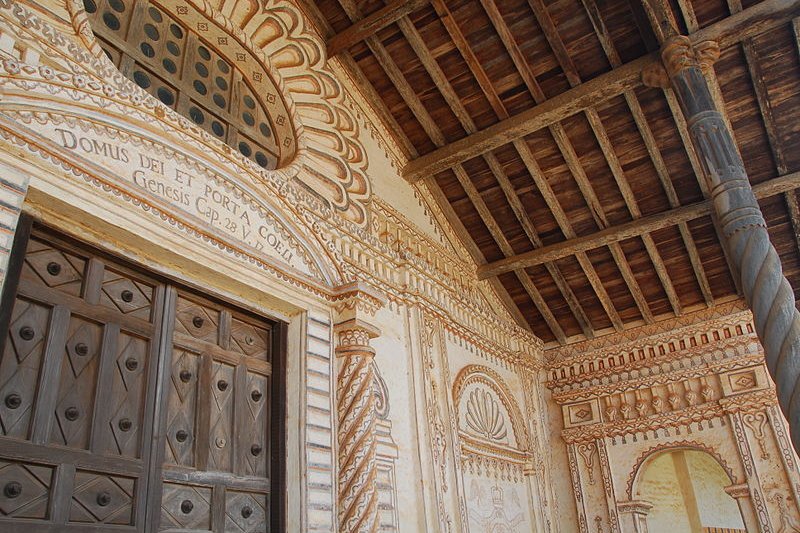 The porch of the Church of San Javier, Santa Cruz, Bolivia
The porch of the Church of San Javier, Santa Cruz, BoliviaSource: https://commons.wikimedia.org/wiki/File:San_Javier_church_porch.JPG
Author: Bamse

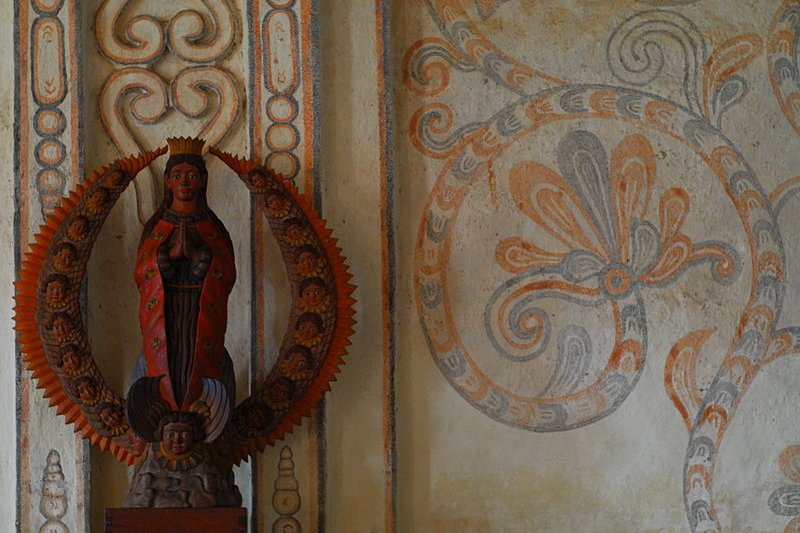 Sculpture in the Church of San Javier, Santa Cruz, Bolivia
Sculpture in the Church of San Javier, Santa Cruz, BoliviaSource: https://commons.wikimedia.org/wiki/File:San_Javier_church_sculpture.JPG
Author: Bamse

Concepción also has a church designed by Father Martin Schmidt. Although established in 1709, it did not become a permanent settlement until 1722.
Santa Ana is one of the later settlements, having been founded only in 1755. Its church was built between 1768 and 1831, after the expulsion of the Company of Jesus. The main altar and pulpit are outstanding for their rich decoration.
San Miguel was established in 1721. Its church, designed by Father Johann Messner, is still standing.
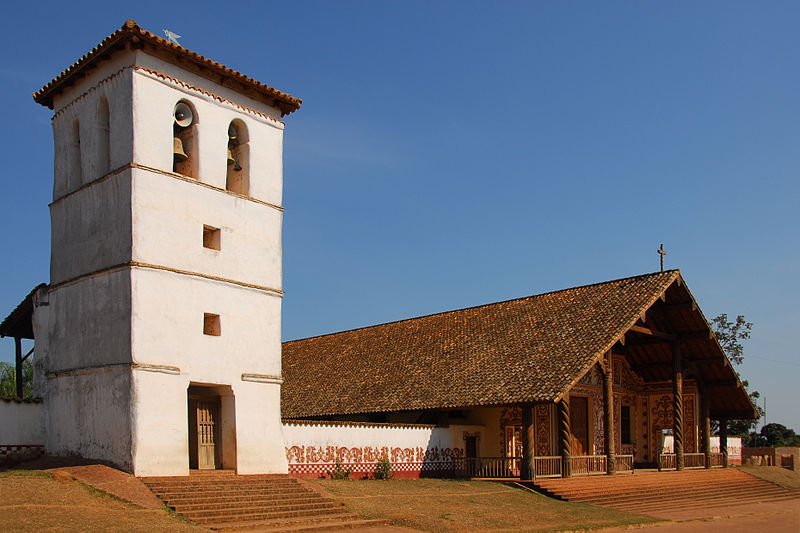 San Miguel de Velasco, Santa Cruz, Bolivia
San Miguel de Velasco, Santa Cruz, BoliviaSource: https://commons.wikimedia.org/wiki/File:San_Miguel_church.JPG
Author: Bamse

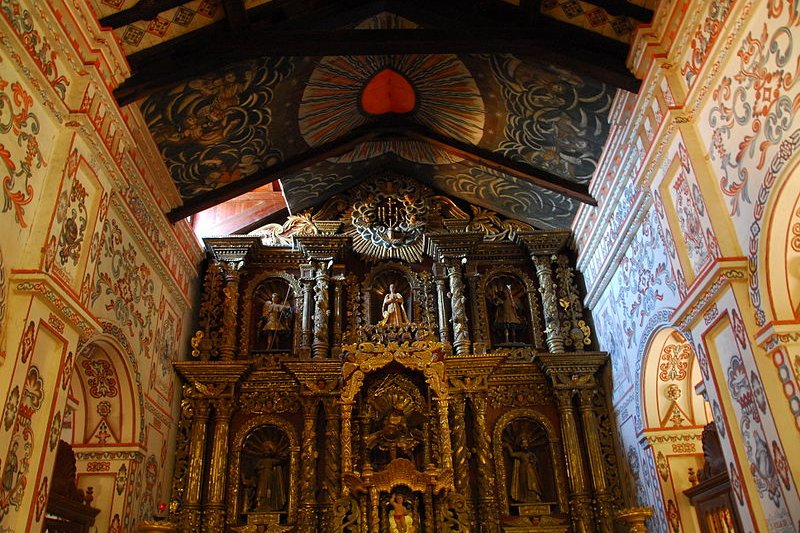 Altar of San Miguel de Velasco
Altar of San Miguel de VelascoSource: https://commons.wikimedia.org/wiki/File:San_Miguel_church_altar.JPG
Author: Bamse

 Interior of San Miguel de Velasco
Interior of San Miguel de VelascoSource: https://commons.wikimedia.org/wiki/File:San_Miguel_church_interior.JPG
Author: Bamse

San Rafael does not have much to show except its church, which was designed by Father Martin Schmidt in 1750. The church has an outside promenade gallery and a wooden bell tower. The beautiful interior that we see today is the work of a 1972 restoration carried out on the church.
San José is one of the earlier settlements. It was founded in 1698. An interesting aspect of this settlement are the four chapels located at each corner of its central square. The religious complex includes the church, a mortuary chapel built in 1740, a bell tower built in 1748, and a house for the priests rebuilt in 1754.
Jesuit Missions of the Chiquitos World Heritage Site Inscription Details
Location: S 16 00 W 60 30Inscription Year: 1990
Type of Site: Cultural
Inscription Criteria: IV, V
Related Sites
The Jesuit Missions of the Chiquitos have similarities to the Jesuit Missions of the Guaranis in Argentina and Brazil, also a World Heritage Site.Visiting Jesuit Missions of the Chiquitos
Your base for visiting this World Heritage Site is La Paz. From there, you can make your arrangements with a travel agent for exploring Bolivia.Going to the Jesuit Missions of the Chiquitos
Travelling in Bolivia is usually a rough ride. You have to expect schedules to change at any moment, so be prepared to allow sufficient time. Timetables are unreliable. The main town for visiting the Jesuit Missions of the Chiquitos is the town of Santa Cruz. Latest updates on Penang Travel Tips
Latest updates on Penang Travel Tips

Copyright © 2003-2025 Timothy Tye. All Rights Reserved.

 Go Back
Go Back